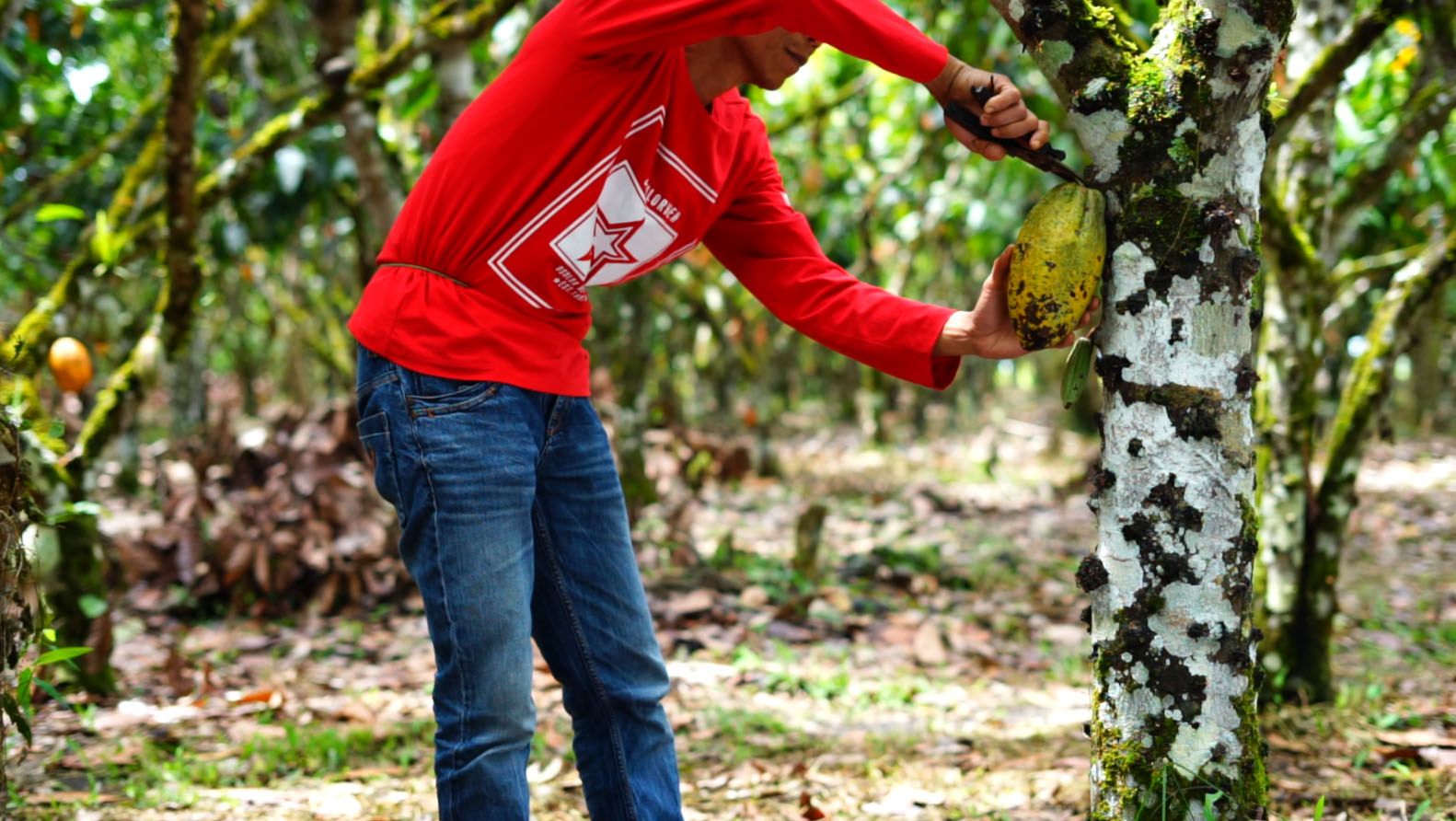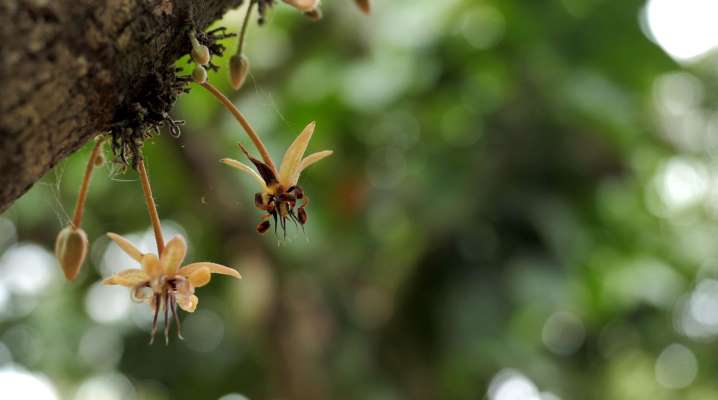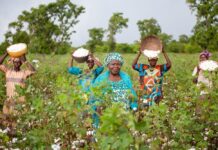The World Economic Forum has identified a list of endangered food and it doesn’t make for pretty reading. The surprisingly long list isn’t of wild, rare, exotic species, that we can conveniently push to the back of our minds, but food that underpins our daily lives, and which is vital to our existence and our economies. In the sixth episode of BBC World News and bbc.com series, Follow the Food, we explore what our farmers, scientists and innovators are doing to rescue some of these foods from going the same way as the dodo or dinosaur.
With global warming changing growing conditions – pests, diseases, floods, droughts – farmers are moving away from crops that cannot guarantee livelihoods, which means that we are at risk of losing them. Here is a list of some of the foods on the endangered food list:
- Peanuts
- Maple syrup
- Strawberries
- Chickpeas
- Wheat/maize/rice
- Soybeans
- Stone fruits
- Bananas
- Avocados
- Wine
- Chocolate
- Coffee
The list includes lots of species that you’ve probably already eaten today, whether you had a banana with your cereal at breakfast, maybe some avocado on toast, strawberries or a peach. It also features species that give us our pleasure – the grapes that grow into wine, the coffee beans that are essential to a morning cappuccino and even chocolate!
The notion of food security might be foreign to many, but when it’s chocolate and wine that’s under threat, people may suddenly start to pay attention.
Wine
Wine is a $326 billion industry and has been shaping our lives and countryside for thousands of years. But some have predicted a potential drop in wine production of up to 85% over the next 50 years, as regions known for fine wine become too hot to produce it.
Of the 1100 planted varieties of wine grapes that exist, only around a dozen of them (1%), make up the majority of our favourite wines. It leaves the wine industry particularly vulnerable if those varieties failed to cope with climate change.
Symington Family Estates, one of Portugal’s largest and most historic wine and port producers, are among several grape growers experimenting with some of the remaining 1088 wine grape varieties.
“We have a library of vines, 37 different varieties. We’re looking at varieties that have been somewhat forgotten over time. Generally, as a region, we have focused on six main varieties, but there are many other varieties and we would like to see whether they are more suitable from the climate aspect,” said Johnny Symington, Chairman of Symington Family Estates.
This historic business is not only looking to the past for solutions, they are also embracing cutting-edge technology to try and get wine off the endangered food list. They are using technology such as the Vine Scout – a robot that moves up and down the Symington vineyards – which provides wine makers with a vast amount of information, including the ability to constantly monitor the vines for stress. The robot is 300 times more efficient at taking sample readings than a human using existing technology.
For the Symington Family Estate, introducing new grape varieties which are more suited to rising temperatures, and protecting their classic varieties with cutting edge technology, will hopefully allow centuries of tradition to carry on well into the future.
Chocolate
 It doesn’t matter whether your bar is milk, white or dark, or if you’re even talking about cocoa powder that you put in cakes, cookies and hot chocolate. All of those products come from a single species and it is under threat.
It doesn’t matter whether your bar is milk, white or dark, or if you’re even talking about cocoa powder that you put in cakes, cookies and hot chocolate. All of those products come from a single species and it is under threat.
Cocoa trees grow in hot, rainy, tropical areas within 20 degrees latitude of the equator, often by smallholders. However, unpredictable weather patterns caused by climate change are causing big problems, including the loss of vital pollinating insects. This means cocoa farmers like Reynold K. Rumapar in Napu Valley, Indonesia are having to take matters into their own hands.
“These last few years we haven’t enjoyed good results because the weather is not always stable. There have been heavy rains and prolonged dry periods. We have to try and do hand pollination. The process occurs when there are many flowers on the tree. Hand pollination is very helpful but, if the technique fails, it will greatly affect the economy for me and my family because it won’t meet the needs of our family,” explained Reynold.
Cocoa growing countries are expected to see a 2.1°C rise in temperature by 2050 and, in Brazil, cocoa farmers are adapting to a change in climate with agroforestry – a system that sees cocoa trees planted through thinned out native forest. These plantations are known as cabrucas.
Carlos Jose Dos Santos, a cocoa farmer in Bahia, Brazil said: “Cocoa is our only income source in the region. Without cocoa, we cannot have a job and we have nothing to harvest. A cabruca is a traditional cocoa cultivation system, an agroforestry system where the cocoa grows best in the shade of the trees, making the Cocoa Coast more attractive for biodiversity.”
Protecting the delicate cocoa fruit from the elements, underneath a large biodiverse canopy, helps increase natural pollination and decrease climate related disease. With continued help from the global agroforestry network, systems in place here and around the world could stop cocoa and chocolate from turning into a thing of the past.
Avocados
 California, USA has become one of the world’s biggest producers of avocados, with consumption more than quadrupling in the US, and the market growing by two and a half times globally, over the past 20 years.
California, USA has become one of the world’s biggest producers of avocados, with consumption more than quadrupling in the US, and the market growing by two and a half times globally, over the past 20 years.
But in recent years, for the likes of fifth generation farmer Chris Sayer, from Ventura County, California, the daily battle against climate change is making growing this fruit almost impossible. For Chris, excessive heat and prolonged droughts are the main challenges when it comes to growing avocados, and the situation is only getting worse. Wildfires, caused by intense heatwaves which raged across California in 2020, decimated 4.1 million acres of land.
“Climate change is definitely one of the major threats we face growing avocados. It’s one of those things that definitely keeps me up at night. In California, we live with drought for 6-9 months out of every year anyway. We’ve got a micro-sprinkler irrigation system that provides just the right amount of water right to the tree’s roots, right where they need it.”
“Another approach we use is a sunscreen – a very fine clay mixed with water. It keeps the leaves covered a little bit more, helps reflect some of the sun’s energy back and keeps the leaf surface temperatures about 10 or 15 degrees cooler,” said Chris.
As well as the regular daily battles, Chris is gearing up for a much longer-term fight against climate change. This includes salt deposits, which build up in the soil and ground water during a drought, and are another effect of unpredictable climate.
Chris explained: “We’re evaluating different avocado root stocks for their ability to tolerate heat and salinity in the future. If there’s too much salt in the water, that can impact the trees, it’ll cause some of the leaves to shrivel and you won’t get the same size and quality of fruit that you want.”
Led by the University of California Riverside, 400 of Chris’ trees are now part of a 20-year trial to establish whether different avocado root stocks, grafted onto different tree varieties, might together exhibit increased tolerance to diseases, drought, heat or soil solidity, with the aim of protecting farmers from climate change in the long term.
Coffee
 Together we consume nearly 500 billion cups of coffee every year. It has been argued that caffeine from plants like coffee has helped fuel industrial revolutions around the world because it allows humans to work harder for longer. So, it’s not just pleasure that’s at risk here, its economic productivity, and the scientists who are trying to conserve this species face unique challenges.
Together we consume nearly 500 billion cups of coffee every year. It has been argued that caffeine from plants like coffee has helped fuel industrial revolutions around the world because it allows humans to work harder for longer. So, it’s not just pleasure that’s at risk here, its economic productivity, and the scientists who are trying to conserve this species face unique challenges.
A picky plant that requires particular conditions to grow, coffee is being attacked from all angles; climate change, deforestation, droughts, pests and plant diseases means getting a cup of coffee in the future may not be a given.
Importantly, it also means the livelihoods for over 125 million people across the world are at serious risk, with farmers, traders, roasters, barristers and many more jobs under threat. But there is some hope, thanks to the scientists at the National Laboratory for Genetic Resources Preservation (NLGRP).
Gayle Volk, Research Plant Physiologist, NLGRP said: “We’ve got about 550,000 samples of seeds that are stored here. It is among the largest collections in the world. Some of these seeds are predicted to be able to survive hundreds to thousands of years at cold storage. Seed banks like this are so important because we capture that genetic diversity and save it for long term. It allows breeders and researchers to have access to these genetic resources for generations to come.”
But when it comes to preserving coffee here, there is a serious problem.
She continued: “The seeds that can be stored here are called orthodox type seeds. These are the seeds that can tolerate drying, as well as cold temperatures. There are some types of plants that we can’t store in a bowl like this, and that includes coffee.”
Coffee seeds have proven intolerant to long term storage in extreme drying or freezing conditions, which means at best they can only last up to 12 months. Instead, scientists are looking to preserve the actual plant, using a method called cryo-preservation.
The benefit of preserving the actual vegetative material, rather than the seed, is that coffee seeds don’t always retain the genes of their cultivated parent, meaning that any seeds used to grow new plants may not produce the desired coffee and in commercial coffee growing, that’s a risk not worth taking.
To find out more or watch the episode in full, you can also visit http://www.bbc.com/followthefood and follow @BBCFuture on Facebook and Twitter for all the latest from the seri








